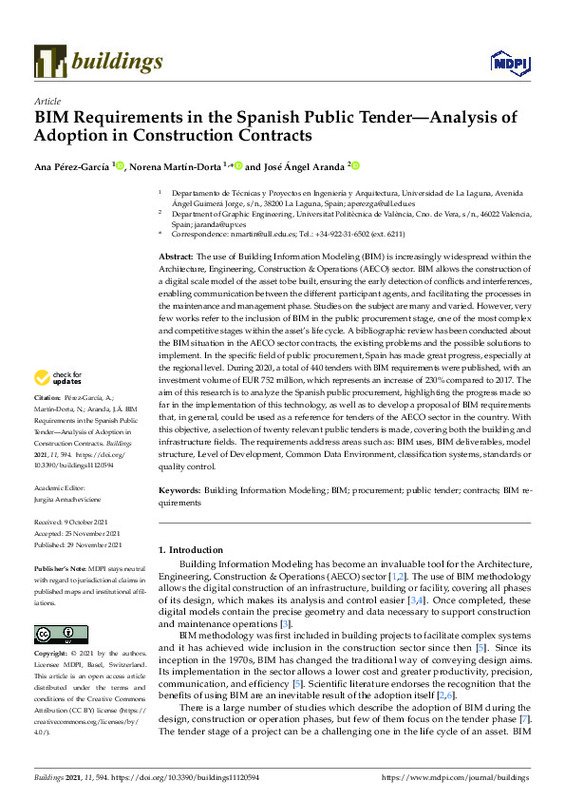JavaScript is disabled for your browser. Some features of this site may not work without it.
Buscar en RiuNet
Listar
Mi cuenta
Estadísticas
Ayuda RiuNet
Admin. UPV
BIM Requirements in the Spanish Public Tender-Analysis of Adoption in Construction Contracts
Mostrar el registro completo del ítem
Pérez-García, A.; Martín-Dorta, N.; Aranda Domingo, JÁ. (2021). BIM Requirements in the Spanish Public Tender-Analysis of Adoption in Construction Contracts. Buildings. 11(12):594-614. https://doi.org/10.3390/buildings11120594
Por favor, use este identificador para citar o enlazar este ítem: http://hdl.handle.net/10251/182110
Ficheros en el ítem
Metadatos del ítem
| Título: | BIM Requirements in the Spanish Public Tender-Analysis of Adoption in Construction Contracts | |
| Autor: | Pérez-García, Ana Martín-Dorta, Norena | |
| Entidad UPV: |
|
|
| Fecha difusión: |
|
|
| Resumen: |
[EN] The use of Building Information Modeling (BIM) is increasingly widespread within the Architecture, Engineering, Construction & Operations (AECO) sector. BIM allows the construction of a digital scale model of the asset ...[+]
|
|
| Palabras clave: |
|
|
| Derechos de uso: | Reconocimiento (by) | |
| Fuente: |
|
|
| DOI: |
|
|
| Editorial: |
|
|
| Versión del editor: | https://doi.org/10.3390/buildings11120594 | |
| Código del Proyecto: |
|
|
| Agradecimientos: |
This research was funded by Contract with Cabildo de Tenerife (Spain) and Agreement with City Hall of Santa Cruz de Tenerife (Spain): ULLCT2101; ULLASC2102. The work of Ana Perez-Garcia was funded by the Predoctoral Program ...[+]
|
|
| Tipo: |
|









